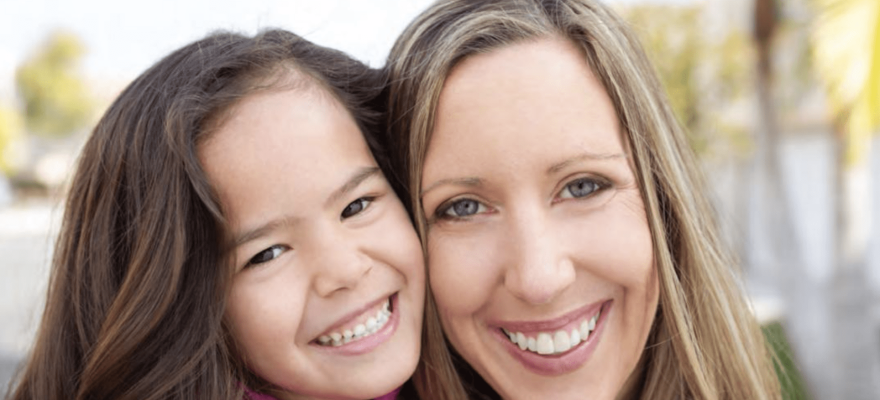
There are many reasons why people consider adoption. For some, it’s a result of failed fertility efforts. For others, it’s a desire to enlarge their family and make life better for a child. But for all, it’s a way to bring people of diverse culture, race and heritage into the bonds of a loving family.
Tony and Nancy Rivera is one couple whose reason for adopting was to enlarge their family and find a companion for their child. “When our son Tony was eight, we went through the state foster-adopt program to find a playmate for him,” says Nancy. “We told them we wanted a child near our son’s age, but when they contacted us, it was for a two-month-old boy named Alex.”
At first, the Riveras declined the agency’s request, but when subsequent phone calls came in, Tony and Nancy reevaluated their decision. “The third time they called us we said, ‘Yes,’” Nancy continues. “We figured if they contacted us that many times, maybe this was the child we were supposed to get.”
But the Riveras got more than they planned for. “Two months later, the agency called again. This time they said Alex had a two-year-old brother named Alfonzo who was in foster care and asked if we wanted to adopt him. So we did,” says Nancy. “Then a year later, we found out the boys had two sisters, Candice, who was six, and Anastasia, who was eight, so we decided to adopt them to keep the family together.”
John and Jo-El Azato took a different adoption route and went through a private agency to find an international child. “We had seen an ad in the newspaper about a seminar on domestic and international adoptions, so we went,” recalls Jo-El. “We knew we wanted an international child who was about one- or two-years old. And after doing research, we decided to go with a child from China.”
During the fourteen months the Azatos waited for their daughter, Nina, they busied themselves with preparations. “We had a baby shower and prepared her room,” says Jo-El. “We also read a lot about parenting and asked friends who had kids lots of questions.”
Waiting, says experts, can be the hardest part of the adoption process, whether it’s waiting for the paperwork to go through or waiting to receive the referral. But while families are on hold, there are things they can do.
“When I talk with couples, I tell them to use the time productively,” says Sam Wojnilower, LCSW, with a local private adoption agency. “Read about adopting and raising children, attend workshops, find a pediatrician – that kind of thing, so they’re already being active parents.”
Although the Riveras didn’t need a primer on childrearing, they did have to learn how to help their adopted children adjust a new environment. “I think it was harder on Candice and Anastasia because they were older than the boys,” says Nancy. “I had to tell the girls they weren’t going to see their biological parents anymore. I’m not sure Candice totally understood, but Anastasia took it very hard. She was a little weepy and apprehensive, maybe even confused. I spent a lot of time with her letting her know she could come and talk with me. I told her it was okay to talk about her mom and dad and I would listen. I tried very hard to build a relationship and establish her trust.”
This is exactly what Adoption Consultant Mary Lou Edgar suggests. “One of the best ways to help newly adopted children adjust in their environment is to close in and establish those family relationships. There’s a natural inclination to want to celebrate with family and friends, but that can come later.”
Wojnilower agrees. “Children need time to adjust to their new family. They also need to establish a consistent routine as soon as possible. This is even truer with international adoption where things like food and times zones are different.”
Although Nina was only ten-months old when the Azatos adopted her, she too, had an adjustment to make. “I think the hardest part of the adoption process was that we didn’t bond right away,” recalls Jo-El. “When we first got Nina, she was well aware we weren’t her regular caretaker and the hotel we were staying in was not the orphanage. She wouldn’t eat and covered her face with her hands. She also cried a lot.”
But three days into the adoption, things changed. “We were still at the hotel and Nina had fallen asleep on the bed. When she woke up, she rolled over and I caught her before she fell off the side. She laughed; she thought it was a game. From that point on it was completely different. I knew we had bonded.”
Perhaps the one who had the biggest adjustment was young Tony, who went from being an only child to sharing his parents with four other children. “Tony did okay when we got boys, but when Candice and Anastasia came, we had to have a talk,” Nancy remembers.
The Riveras didn’t know for certain the girls were coming until that morning, and Tony had already left for school. “When he got home, the girls were there, so I pulled him aside and explained why we wanted to keep them all together,” says Nancy. “It was hard but I think he understood. It’s funny, though, the last thing he said to me was, ‘Mom, I’ll let them come in, just don’t paint the house pink!’”
One day soon, 2-year-old Nina may be making that same adjustment. “We are just now starting the adoption process to get a boy from Vietnam,” Jo-El concludes. “We want to get another Asian child so there is a similarity between them, particularly in this big Italian family.”
By Denise Yearian, a freelance writer and and mother of three children and four grandchildren.
Read Next | A Look at Adoption from the Inside

QUESTIONS TO ASK WHEN CONSIDERING ADOPTION
Adoption is a broad topic covering everything from domestic infant to international to children from foster care. Add to that trans-racial, trans-cultural, older children, and physical, mental, and emotional challenges, and subject can be overwhelming. Families interested in pursuing adoption, should start by asking themselves what type of adoption they want. From there, they can begin their search for a private or government-sponsored agency.
When choosing an agency, it is important that families feel comfortable with the organization and know they are being heard. Following is a list of questions to ask when shopping around for an adoption agency:
Is this a licensed adoption agency?
What types of adoption does this agency do?
What are the requirements to adopt from this agency (age, religion, income, marital status, other children)?
What does a home study with this agency entail?
How do you train prospective families, individually or in groups?
Do you provide support for families after a child has been placed in the home?
Can you provide me with a referral of someone who has worked with your agency so I can speak with them about their adoption experience?
RESOURCES
Following is a list of books and websites for those considering adoption.
Books
~Adopting on Your Own: The Complete Guide to Adopting as a Single Parent by Lee Varon
~How to Adopt Internationally by Jean Nelson-Erichson and Heino R. Erichson
Raising Adopted Children by Lois Ruskai Melina
~There are Babies to Adopt: A Resource Guide for Prospective Parents by Christian A. Adamec
~Twenty Things Adopted Kids Wish Their Adoptive Parents Knew by Sherrie Eldridge
Websites
adoptivefamiliesmagazine.com Nation’s leading adoption magazine provides independent, practical information on adopting and raising healthy, happy children.
adoptuskids.org The only national, federally funded photo listing service for children in foster care waiting for permanent families.
childwelfare.gov Resources on all aspects of domestic and inter-country adoption, including adoption from foster care.
rainbowkids.com International Adoption Publication. Run by an adoptive parent, this site features photo listings of waiting children, listings of agencies and articles on adoption. One of the top sites for international adoption information.

Read Next | This Is What the the New Normal Will Be like for Your Kids




